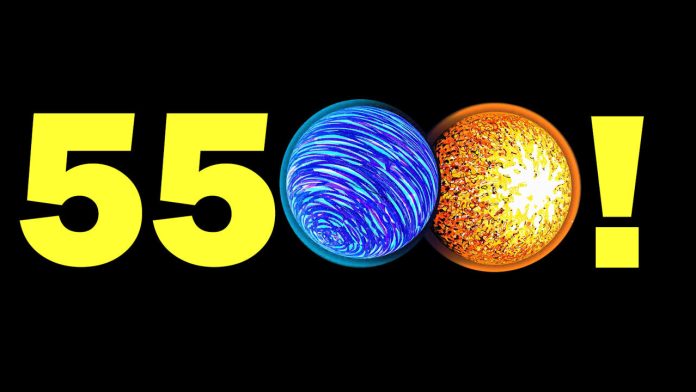
On August 24, 2023, scientists announced the discovery of six new exoplanets, bringing the total number of known exoplanets to 5,502.
This milestone marks another significant step in our understanding of worlds beyond our solar system.
It has been just over three decades since the first exoplanets were confirmed in 1992, and the field of exoplanet science has grown rapidly since then.
The first exoplanets, Poltergeist and Phobetor, were discovered orbiting the pulsar PSR B1257+12 in 1992.
By March 2022, scientists had confirmed over 5,000 exoplanets. The addition of these six new exoplanets demonstrates the continued advancement in our ability to detect and study these distant worlds.
Here are the details of the six newly discovered exoplanets:
HD 36384 b
- A super-Jupiter that orbits a massive M giant star.
- Discovered using the radial velocity method, which measures the “wobble” of stars caused by the gravitational pull of orbiting planets.
- Orbits a star nearly 40 times the size of our sun.
TOI-198 b
- A potentially rocky planet on the innermost edge of the habitable zone around an M dwarf star.
- Discovered using the transit method, which detects planets as they pass in front of their stars, causing a temporary dimming of the star’s light.
TOI-2095 b and TOI-2095 c
- Two large, hot super-Earths orbiting the same M dwarf star.
- Both were discovered using the transit method.
- Their proximity to the star suggests they are more similar to Venus than Earth.
TOI-4860 b
- A Jupiter-sized gas giant, known as a “hot Jupiter,” orbiting an M dwarf star.
- Discovered using the transit method.
- Completes an orbit every 1.52 days, making it very close to its star. It is rare for giant planets to orbit M-dwarf stars so closely.
MWC 758 c
- A giant protoplanet orbiting a very young star with a protoplanetary disk.
- Discovered using direct imaging.
- Found carving spiral arms into the star’s protoplanetary disk, making it one of the first exoplanets discovered in such a system.
The field of exoplanet science has flourished since the first confirmation in 1992, thanks to advancements in technology and new instruments.
NASA’s Transiting Exoplanet Survey Satellite (TESS), launched in 2018, has identified thousands of exoplanet candidates and confirmed over 320 planets.
Other space telescopes, like Spitzer, Hubble, and the James Webb Space Telescope, have also played crucial roles in discovering and studying exoplanets.
Looking ahead, NASA’s Nancy Grace Roman Space Telescope, set to launch in May 2027, will carry the Roman Coronagraph Instrument. This advanced technology will help directly image exoplanets by distorting starlight, revealing hidden planets.
The future looks promising, with plans for missions like the Habitable Worlds Observatory, which aims to search for signs of life on planets outside our solar system.



